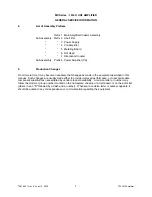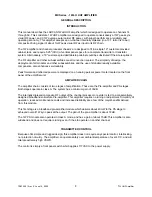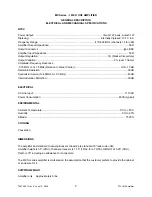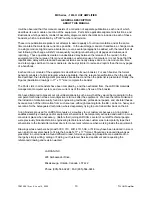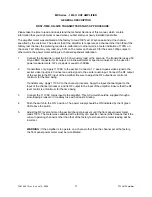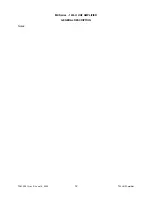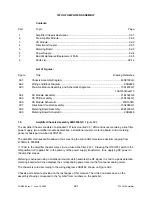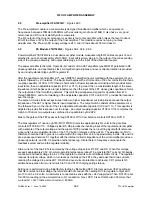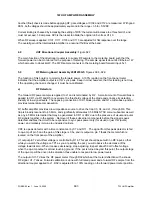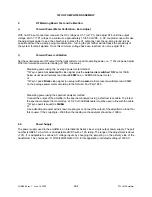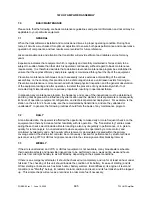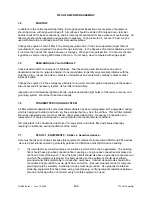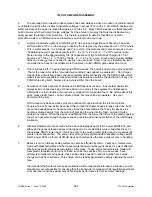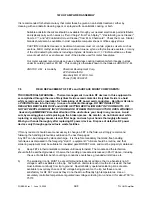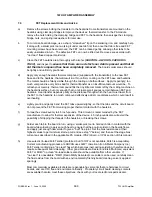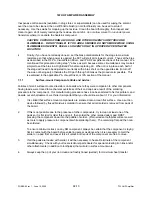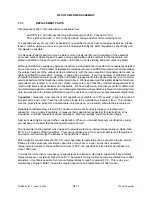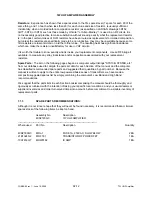
1W UHF AMPLIFIER ASSEMBLY
PUB99-92 rev 1: June 19, 2000
92-9
1
W UHF Amplifier
7.9
FET Replacement Hints and Advice:
a)
Remove the screws bolting the transistor to the heatsink. Some transistors are mounted on the
heatsink using clamping bridges to improve the devices’ thermal transfer. In the PA module
remove the nuts holding the clamping bridge and FET to the heatsink, then salvage the clamping
bridge, nuts, and spring lockwashers for later use.
b
To minimize board damage, use a sharp "screwdriver" tip on the soldering iron, and carefully help
it along with a solder pick tool, working it under one tab first, then once that tab is free and FET
mounting screws have been removed, the FET can be rocked gently, allowing other tabs to be
easily unsoldered in turn. The defective FET can now be lifted out. Remove excess solder with
"no clean" fluxed copper braid wick.
c)
Clean the FET heatsink area thoroughly with alcohol
(CAUTION:- ALCOHOL VAPOUR IS
TOXIC),
and inspect to
ensure that there are no defects nor debris present and that all
old thermal compound has been completely removed
.
The board solder areas should
be lightly and uniformly pre-tinned.
d)
Apply only enough heatsink thermal compound (supplied with the transmitter) to the new FET
base and to the heatsink, that will result in a thin uniform coating on the FET base and heatsink.
The metal should be faintly visible through the coating on both surfaces. Apply it sparingly; too
much compound is every bit as bad for thermal transfer as an insufficient amount would be. To
refresh your memory: thermal compound fills the tiny little tool marks left by the milling machine on
the heatsink surface, but only enough that no microscopic air spaces remain between FET and
heatsink. Heat transfer depends partly on the distance through which the heat must travel from
the FET to the heatsink; too much compound effectively adds more distance, which could result in
overheating.
e)
Lightly pre-tin and gently bend the FET tabs upward slightly, so that the tabs and the circuit board
do not prevent the FET from making proper thermal contact with the heatsink.
f)
Torque the screws evenly to 4.5 inch-pounds. This amount is recommended by the FET
manufacturer to allow for thermal expansion of the device. 4.5 inch-pounds also will avoid the
possibility of stripping the threads in the heatsink, or breaking the screws
g)
Solder each tab to the board in turn, using a solder-pick tool to hold each tab in contact with the
board while soldering; apply enough heat to ensure that the pre-tin solder on the boards flows,
and apply just enough new solder to give a "butt" free joint. Set the bias resistances at their
highest values to get minimum start-up current (see step "l" below), and then set the stage bias
currents as described in the applicable PA module, IPA2 (driver), or IPA1 section of this manual.
h)
Use eutectic tin-lead 63/37 solder (preferred, but if 63/37 is not available, 60/40 is acceptable).
Current manufacturing process at LARCAN uses AIM
™
(American Iron & Metal Company Inc.)
63/37 solder containing a "no clean" flux which becomes inert during soldering, therefore does not
require subsequent board cleaning. Other good brands are Kester and Ersin Multicore; equivalent
63/37 or 60/40 "no clean" tin-lead solders also should be available from other vendors. If
"no-clean" is unavailable, "RMA" (Resin Mildly Activated) core solder can be used; carefully clean
the flux residue from the board with an environmentally friendly board cleaning solvent, applied
sparingly.
Most commercially available alcohols are reasonable flux solvents that are harmless to circuit
boards, and are CFC free and environment-friendly. Proprietary circuit board cleaning solvents
are available that also meet these objectives; check with your local electronics parts dealer.

